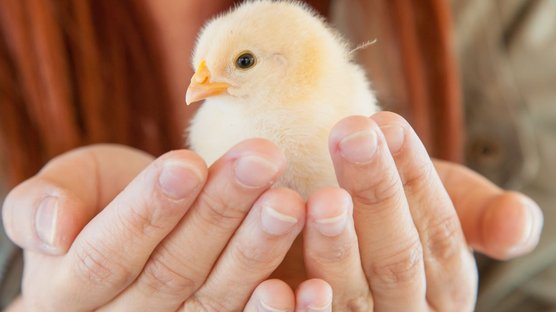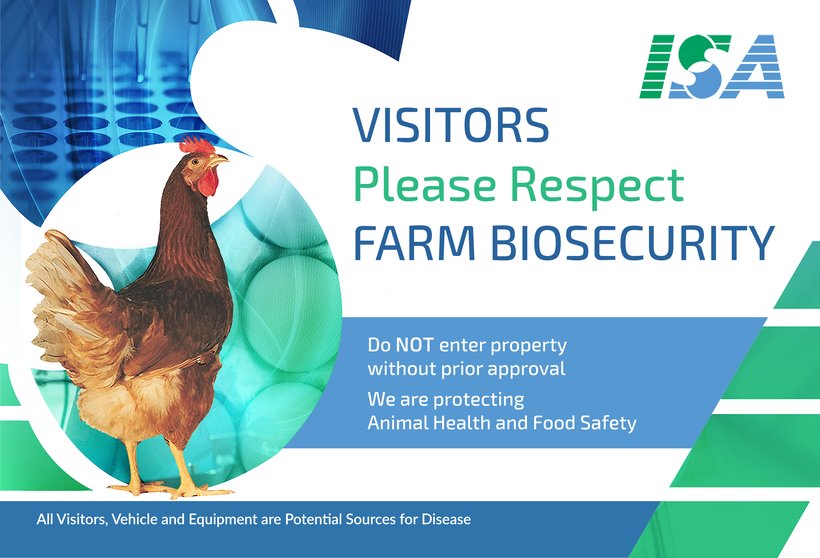
Published on Dec. 22, 2020
All about Biosecurity
Achieving good results with your flock depends highly on the health status of your birds. A good health status is very important for two main reasons: Healthy animals are more efficient producers, as disease costs energy that affects your profitability. Secondly, your goal of keeping laying hens is to produce safe and high-quality eggs. The eggs need to be safe for human consumption, free from pathogens and any other contamination. Biosecurity programs are installed to maintain a good health status. Biosecurity is the key to prevention of disease, together and in cooperation with custom made vaccination programs and disease eradication programs. Any national and local legislation, regulations and environmental restrictions must be followed. Prevention is always better and cheaper than cure.
In order to implement a biosecurity program, you need to understand what Biosecurity is about:
- Biosecurity is the prevention of introducing disease
- Biosecurity means minimizing the risk of entrance of pathogens onto a farm and into a house (flock)
- Biosecurity is the exclusion, eradication or effective management of risks.
- Biosecurity is recognizing risks and acting accordingly
- Disease can be airborne over a limited distance
- Disease can come along with the introduction of contaminated birds (direct contact)
- Disease can be introduced, attached to visitors/workers/rodents/flies/trucks/materials/feed/equipment (indirect contact)
The most important part of biosecurity programs is often changing the way of thinking about what is clean and what is dirty – and acting accordingly. An understanding of the reasons why you implement certain biosecurity measures on a farm can help significantly in persuading staff to behave according to these rules. Biosecurity measurements must be simple, easy to understand, agreed upon and monitored.
Biosecurity is the cheapest, most effective means of disease control. The difficulty is not to implement a biosecurity program but to maintain it!
Housing
Ideally, your poultry houses are located well away from other poultry houses and be managed under “all-in-all-out” principles, in order to prevent contamination between flocks of different ages. Whatever the building style, houses should be constructed in such a way that they can be easily and thoroughly cleaned and disinfected in between flocks. In cold and temperate climates, the walls and roofs should contain insulation with a moisture barrier and rodent proof materials. Ceiling height should be adequate for proper ventilation. Equipment used in the house should be designed for easy access and removal for clean-out, maintenance and biosecurity considerations.
Observe a strict separation between the outside and the inside of the farm premises. Install fences and facilitate the clean road / dirty road principle for the delivery of feed and the removal of manure and dead birds. This will prevent indirect contact between birds of different farms/houses. Do not allow trucks and cars on the clean part of the premises. Also maintaining the strict separation between outside and inside of the houses is important. This can be implemented quite simply: by changing clothes and footwear and washing + disinfection of hands before entering a poultry house. Ideally, equipment should be dedicated exclusively to one house and if the introduction of equipment or tools from another house is necessary, they should be carefully disinfected. The risk from vehicles entering the farms must be managed also.
With electrically powered equipment, it is essential to use a reliable source of electrical power. In houses with a controlled environment, standby generators and power failure alarms are necessary.
Houses should be rodent and bird-proof to prevent disease transmission from wild birds. Every air inlet should be equipped with nets to prevent this risk. Bait stations should be placed inside and outside the houses in order to control rodent activity. They should be checked regularly (once a month) in order to refill them, and the frequency of inspection
should be increased during outbreaks of rodent activity. Wild animals should not have access to feed and water to prevent vermin. Keep insects under control, as insects can also be a source of contamination. Insect activity should be monitored in order to apply appropriate treatments at the right time. Only insecticides permitted for use near animals should be used during the rearing and production periods. When you use insecticides, we strongly recommend the use inside the house just after depletion and a second treatment, just before the arrival of the replacement flock.
Storage rooms, where material to be used in the poultry houses is stocked, must also be bird, rodent and fly free. Feed can be a major risk factor for Salmonella. And make sure that you test that the drinking water is free from pathogens as drinking water can be contaminated with E. coli, yeast, molds and even Avian Influenza when surface water is used.
Personnel and visitors
Visits should be strictly controlled, and visitors should confirm that they have had no recent contact with other birds for at least 48 hours (preferably 72 hours). You should keep track of your visitors; you could do this via a visitor registration form (Appendix 1). Entry should be through a cloakroom with a full change of clothes and boots, and if possible, after taking a shower. Special care should be taken with boots, which should always be disinfected before entering the poultry houses. Cloakroom design should clearly show different areas with a dirty zone to remove “civilian” clothes, and a clean one, in which to put the farm clothes on.
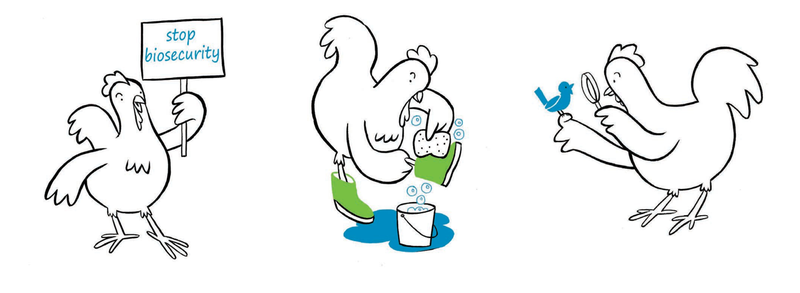
In order to prevent cross contamination do not allow farm employees to have poultry at home. Dedicated personnel for each flock are a must to reduce the risk of contamination from house to house. If this is not possible, visits should always be done in the order from younger to older houses, and to finish with sick/affected flocks if there are any.
Please note:
- Foot baths with disinfectant or disinfected treated pads are hard to maintain and therefore often useless.
- At any time, dogs and cats should be kept out of the farm as they are potential transmitters of diseases that can affect your flock!
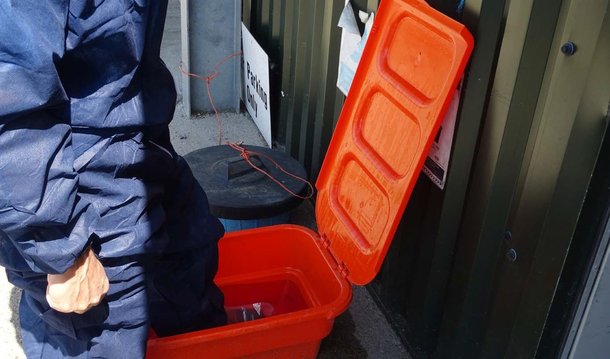
Monitor your flock
Poultry keeping is all about the chickens, they are the ones producing the eggs. By monitoring the birds carefully, you can not only tell a lot about the health of your flock, but also about the quality of the housing and care. By having a close look on the flocks’ production, health and behavior you should be able to understand your flock.
What to check?
Besides checking the disease-free status of your flock, as this will inform you how effective your biosecurity program is, normal production parameters should be registered and monitored in order to detect any abnormalities (reduction of lay, feed consumption or bodyweight). This is the best way to implement early corrective actions in order to solve any problem that might occur.
| Traits | Optimal advanced practice |
|---|---|
| Feed consumption | Daily |
| Water Consumption | Daily |
| Mortality | Daily |
| Climate | Daily |
| Egg Production | Daily |
| 2nd grade eggs | Daily |
| Egg size | Daily |
| Hen bodyweight | Weekly till 30 weeks, monthly after 30 weeks of age |
| Disease free status | Monthly |
Clean up and disinfection
Bacteria and viruses can survive in environments for a long time. After flock depletion, houses must be cleaned and disinfected carefully, to prevent contamination with pathogens from the previous flock. The absence of stock permits unhindered access to all parts of the building and equipment, facilitating the terminal hygiene program of cleaning and disinfection. As soon as the stock have been depleted, work should commence. The sooner the program is completed, the greater the reduction in potential pathogens prior to restocking.
There are two basic tasks to be carried out:
- Cleaning -the purpose is to remove organic matter and to make all surfaces visually clean.
- Disinfection- the act of sanitizing the ‘clean’ surfaces.
- Down Time- the time the house is empty, very effective tool to kill pathogens
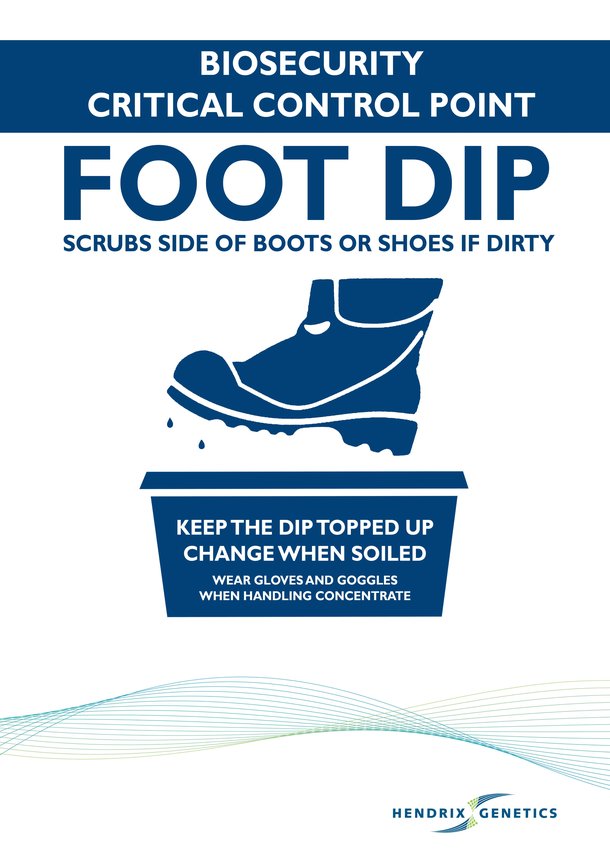
Dead birds can be a source of bacteria multiplication: make sure you remove dead birds daily. Dispose dead birds in a hygienic way, e.g. do not store them inside the laying house.
Prevent that rodents and insects have access to the dead birds as they can spread easily the pathogens. Register your mortality daily, by registering the mortalities and making it visual via a graph, you can better identify when your mortalities become too high and allows you to act in time!
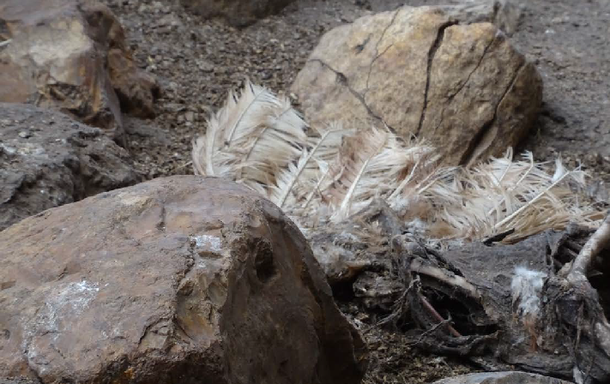
There are different suppliers of chemicals, and generally different products are needed for these two tasks, detergents are used for cleaning, and disinfectants for sanitizing. There are detergents available that also have some disinfecting properties, but in the poultry house make sure that you still apply a suitably formulated disinfectant to safeguard proper disinfection of the poultry house.
In the following section we explain the different phases of a proper cleaning and disinfection program, step-by-step.
Stage 1 – removal
- Livestock
- Deadstock: dead birds and any carcasses
- Feedstuffs: if you plan well, this can be minimized
- Moveable equipment
- Droppings and litter
- Whilst the house is still warm it is recommended to treat for red mite/insects
- Bait extensively for rodents
Stage 2 – preparatory
- Drinking system – drain and refill with detergent solution
- Soaking – all surfaces and equipment with detergent solution
- Hand cleaning – any non-waterproof items
Stage 3 – washing
Pressure wash all surfaces with detergent solution. This should not be restricted to internal surfaces – concrete access areas, air inlets etc., should also be washed.
Stage 4 – re-assembly
Re-instate cleaned moveable equipment into the poultry house when dry.
Stage 5 – disinfection
Spray all previously washed surfaces of building and equipment with disinfectant solution. Water lines must be cleaned first with an alkaline based detergent and after, an acid-based detergent and then flushed out thoroughly. Afterwards spray all surfaces (especially nests and slats) with appropriate chemicals for insect and mite control.
Stage 6 – fumigation
Close the building before atmospheric fogging with formalin or a suitable disinfectant.
Stage 7 – sanitary break period
The building should be kept empty for at least 2 weeks. If maintenance work is to be carried out, normal biosecurity precautions should be observed and repeat stages 5 and 6 before the new flock arrives.
Stage 8 – preparation for the arrival of new stock
- Check the proper functioning of all equipment
- Supply the drinking system with fresh water
- The feeders should remain empty
- Depending on the time of the year and the flock (day old chicks), the building should be heated



